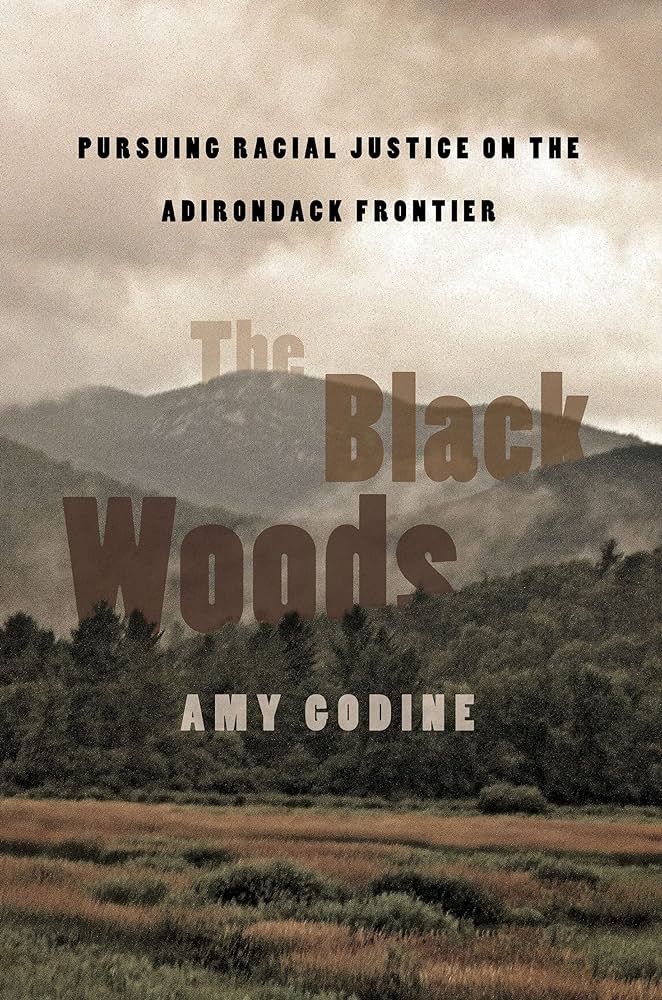
The Black Woods is Required Reading
By Justin A. Levine - Adirondack Council Communications Associate
Friday, February 9, 2024
In light of Black History Month, it’s important that we remember to view the Adirondack Park for what it is - a deeply historical place for both people and the environment.
To that end, I would like to recommend the book The Black Woods by historian Amy Godine. There have been explorations of Black suffrage in the Adirondacks, but Godine’s tome examines this fascinating history and puts it into a much broader context.
 Of course, the famed abolitionist John Brown is buried at his homestead just outside Lake Placid, and his notoriety has certainly provided the larger Adirondacks with a narrative around race that has endured for well over a century. But, perhaps not as well known, is that Brown spent a limited amount of time at his North Elba home while others worked tirelessly around New York state to help enrich the lives of Blacks in the antebellum era.
Of course, the famed abolitionist John Brown is buried at his homestead just outside Lake Placid, and his notoriety has certainly provided the larger Adirondacks with a narrative around race that has endured for well over a century. But, perhaps not as well known, is that Brown spent a limited amount of time at his North Elba home while others worked tirelessly around New York state to help enrich the lives of Blacks in the antebellum era.
Godine looks deeper than Brown’s legacy to examine the effort that went into providing land in the Adirondacks to Black men. At the time, New York only allowed land-owning males the right to vote, and so a broad coalition went to work to ensure that free Blacks were given property that would provide them with numerous opportunities.
However, life is very different in the northern Adirondacks than it is in New York City, regardless of the century we’re talking about. Godine goes in-depth on philanthropist Garrett Smith, who inherited and then donated thousands of acres of land for suffrage purposes. However, Smith, who spent most of his life in central New York, engaged people in New York’s major cities to find Black men that might want to move north to try their hand at farming.
This led to numerous challenges, from actually getting to the land to finding out the land may be just a swamp to disingenuous land surveyors. Needless to say, asking hundreds of city dwellers to go someplace with long winters and no roads was an uphill battle.
However, many of the land grantees persevered, and some even went on to fight on behalf of the North in the Civil War. Whether the land was used as a farmstead or held as an investment, there is no doubt that land grants in the Adirondacks played an integral role in shaping both the personal and environmental landscape of the Adirondack Park.
Whether you’re interested in Adirondack, Black or antebellum history, Godine’s The Black Woods will leave an undeniable impression on your understanding of Adirondack Park, and is required reading for those who want to ensure a more welcoming Adirondacks for everyone.
Looking for more ways to get involved with the Council?
Take Action! Connect With Us! Support Our Work!

Justin Levine joined the Council staff in 2021 as the Communications and Outreach Assistant. He previously worked as a regional marketing manager for the Regional Office of Sustainable Tourism and was an award-winning journalist and photographer for the Adirondack Daily Enterprise and Lake Placid News. Since graduating from Paul Smith’s College in 2004, Justin has worked in the environmental field in various roles in both the Adirondacks and Florida. When not working, Justin loves spending time with his family, running, and doing all the outdoor things the Park has to offer.




